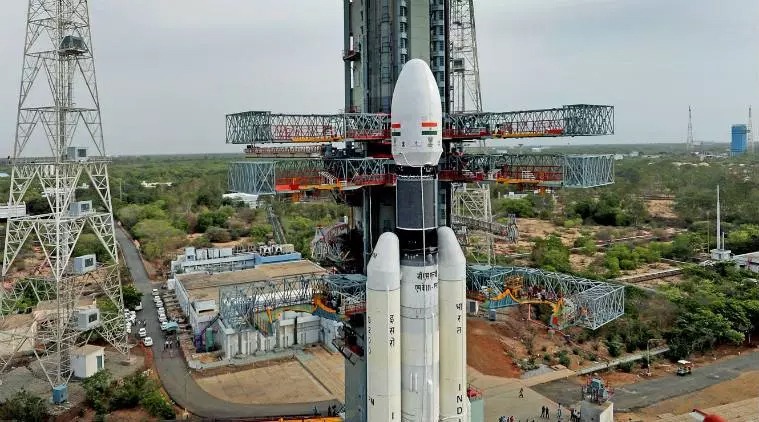
Chandrayaan-2 launched today at 2.43 pm from Satish Dhawan Space Center of Sriharikota (Andhra Pradesh). The speed and circumstances of the rocket are normal after launch. Earlier this year, ISRO had completed the launch rehearsal of Chandrayaan-2 on Saturday. ISRO tweeted on Thursday that the launch of Chandrayaan-2 was scheduled to be 2.51 pm on July 15, which was postponed due to technical flaws. ISRO has cured all technical flaws within a week.
About 15 minutes before the start of the mission on July 15, ISRO had announced to increase the launch by tweeting. BR Gurprasad, Associate Director of ISRO, told that there was a failure in launching the vehicle system just before the launch. For this reason, the launch of Chandrayaan-2 has been deferred. Later on Saturday, ISRO tweeted that the launch rehearsal of GSLV Mk3-M1 / Chandrayaan-2 has been completed. Its performance is normal.
Chandrayaan-2 will reduce one round of earth
Despite the launch date of one week forward, the date on Chandrayaan-2 moon will reach 7th September. It is intended to be delivered on time so that landers and rover can work according to schedule. To save time, Chandrayaan will take less than one round of earth. There were 5 rounds before, but now it will rotate 4. Its landing is fixed in such a place where the sunlight is high. The lights will begin to subside after September 21. Lander-Rover has to work for 15 days, so it is necessary to arrive on time.
Chandrayaan-2 weighing 3,877 kg
Chandrayaan-2 will be launched from India’s most powerful GSLV Mark-III rocket. This rocket will have three modules orbiter, lander (Vikram) and rover (Pragyan). Under this mission, ISRO will land the lander at the southern pole of the Moon. This time, Chandrayaan-2 will weigh 3,877 kg. It is about three times more than the Chandrayaan-1 mission (1380 kg). The speed of the rover inside the lender will be 1 cm per second.
Chandrayaan-2 launches for the first time in October 2018
ISRO was launching Chandrayaan-2 in October 2018 first. Later, its date was extended to January 3 and again to 31st January. Afterwards, it was postponed until July 15 due to other reasons. Due to changes during this time, the load of Chandrayaan-2 has also increased in advance. There were some changes in GSLV Mark 3 as well.
What is the Chandrayaan-2 mission? How different is it from Chandrayaan-1?
On the new date fixed, Chandrayaan-2 will be launched from Satish Dhawan Center, Sriharikota, from India’s most powerful GSLV Mark-III rocket. Chandrayaan-2 is actually a new version of the Chandrayaan-1 mission. It includes orbiter, lander (Vikram) and rover (Pragyan). Chandrayaan-1 had the only orbiter, which roamed in the orbit of the moon. India will launch lander on the moon surface for the first time through Chandrayaan-2. This landing will be on the southern pole of the moon. With this, India will become the first country to land on the moon’s southern pole.
What will the orbiter, lander, and rover work?
After reaching the orbit of the orbit, the orbiter will work for one year. Its main purpose is to communicate between Earth and Lander. The orbiter will map the surface of the moon so that the existence and development of the moon can be traced. At the same time, Lander and Rover will work on the moon (equivalent to 14 days of Earth). Lander will check whether earthquakes occur on the moon or not. Whereas, the rover will detect the presence of mineral elements on the surface of the moon.






